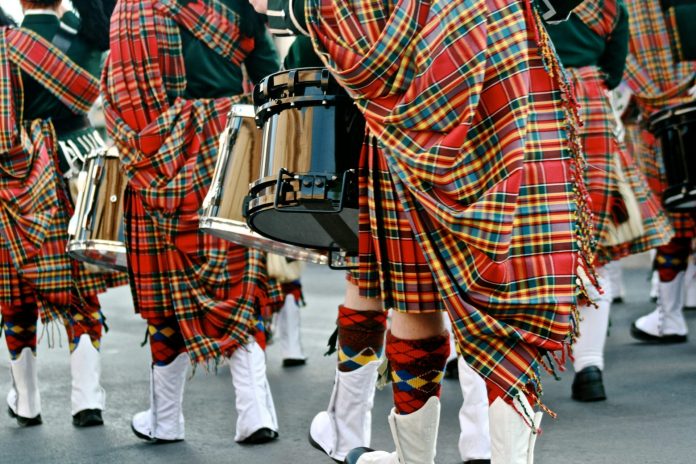The Scottish Highland dress is considered one of the oldest cultural attire worldwide. It witnesses a spike in its demand, not only in Highland but worldwide. Surprisingly, the kilt industry contributes to £350 million annually. Another source claims a 280% increase in kilt demand in recent years. The stats clearly show the kilts industry to be quite a significant part of the business. Surprisingly, several countries other than Highland benefit from making and selling kilts. Let’s have a detailed eye on how kilts impact the economy locally and internationally.
The Kilt Industry and Local Employment
Making mens utility kilts is an art and an individual needs to be an expert to craft this traditional garment. Against making a kilt, he also obtains a handsome amount. Kilt-making is an art that is transferred from one generation to the next in Scotland, and that is how it helps local artisans and the wider textile chain supplies.
Supporting Local Artisans and Small Businesses
Kilts are the most demanded apparel in Scotland because of their existence in modern, traditional, and cultural events. To fulfil this increased demand, local small businesses remain engaged in making kilts all around the year. A positive aspect of small entrepreneurship is hiring local artisans, which helps people to boost the regional economy. Brands like Utility Kilt UK are part of this growing movement by working closely with skilled craftsmen to offer high-quality kilts while sustaining the local economy.
Employment Across the Textile Supply Chain
The kilt industry significantly boosts the textile sector, particularly in the production of tartan, leather, and denim fabrics. The popularity of kilts in traditional and modern forms requires fabric in very vast quantities. Due to constant demand, fabric production continues year-round, supporting consistent employment within the textile industry. Therefore, the textile industry needs employees to work.
Economic Impact on Rural and Urban Communities
Even though machines have replaced humans in making kilts, making kilts by hand is still a popular technique. Hand-made kilts are the top priority for those who want to maintain a traditional connection with their cultural attire. This practice is common in rural communities. Even Scots living in urban areas often prefer handcrafted kilts for their traditional value. On the other hand, modern kilts are made by machines in rural communities. Both techniques help people to earn their livelihood and serve the Scottish economy.
Kilt-Making as an Export Product
Exporting kilts is always a source to push the Scottish economy. The tradition of tartan, especially sending it to other countries, has spiked in recent years. Many factors collectively play a part in it.
Global Demand for Authentic Scottish Kilts: Kilts have emerged as a fashion statement and gained global recognition worldwide. So, the Scottish diaspora and those who want love admiring tradition demand authentic kilts. As the country of kilt’s origin, Scotland holds a unique position to offer the highest level of authenticity.
Key Markets Driving Kilt Exports: The demand for kilts serves as an opportunity for millions worldwide to generate revenue and make other people aware of Scottish traditions. Undoubtedly, the Scottish market is the most significant one in this domain. Nevertheless, the economies of other countries such as Japan, India, France, Germany, and the UK also get a positive response.
Cultural Tourism Driven by Kilts
The tourism sector is quite rich in Scotland. Millions of visitors cross the Scottish border for new observations every year. Sources claim that international visitors spend £10.8 billion. This nature-gifted country has much to offer such as stunning landscapes, tradition-rich sites, and most importantly cultural attire.
Kilts as a Magnet for Cultural Tourists
Without a doubt, all recognitions of Scotland are amazing but kilts are the beautiful face of Scotland. Kilt manufacturers and tourism officials agree that kilts serve as a powerful draw for international visitors. Any person who visits Scotland ensures to attire himself in Scottish dress to truly experience the charm of the country.
Festivals and Events Celebrating Scottish Heritage
Many Scottish festivals take place around the year. In these events, tourists and locals consider it mandatory to wear kilts. Some of these festivities are Highland Games, Burns Night, and Edinburgh Festivals. People making contributions here from different countries oblige tourism while the tradition of wearing kilts positively impacts the kilt industry.
The Role of Museums and Heritage Sites
The tourism and kilt industries are not only obliged by events in Scotland but the ancient places such as castles and museums also play a role. Wearing kilts is a common practice for increasing the sales of attire and making people overview the Scottish past in traditional ways. Cultural tourism and the kilt industry collectively keep the Scottish economy touching the sky around the year.
Looking Ahead: Tradition and Economy Intertwined
Kilts are the backbone of the Scottish economy along with a traditional way to express an admiration for the culture. This particular industry not only promotes itself but other sectors such as textile supply chain and tourism. Every person benefits from it whether he is a local artisan or a small business. In essence, the kilt industry creates consistent income opportunities for individuals while contributing to the broader Scottish economy.



 Bitcoin
Bitcoin  Ethereum
Ethereum  Tether
Tether  XRP
XRP  USDC
USDC  Solana
Solana  Lido Staked Ether
Lido Staked Ether  TRON
TRON  Cardano
Cardano  Avalanche
Avalanche  Toncoin
Toncoin